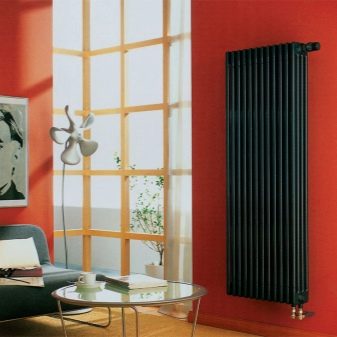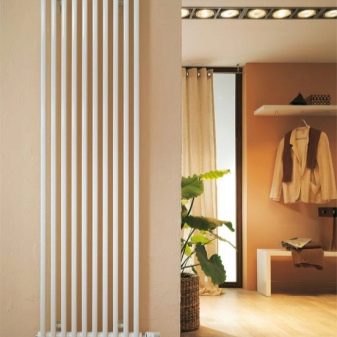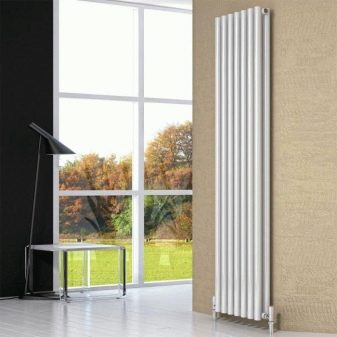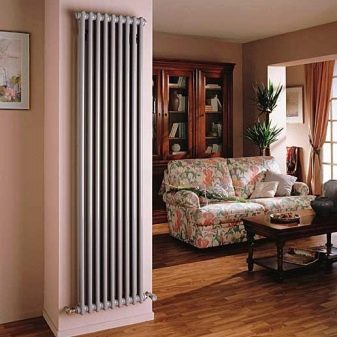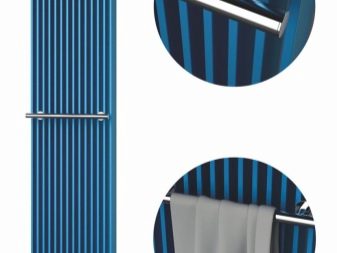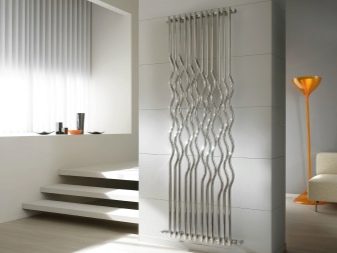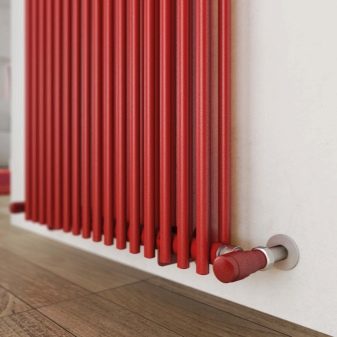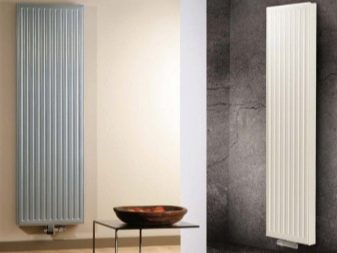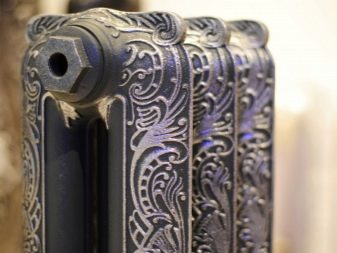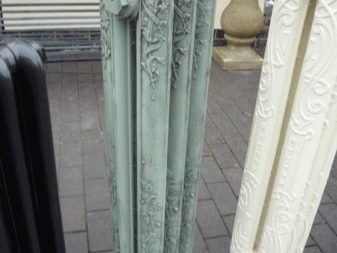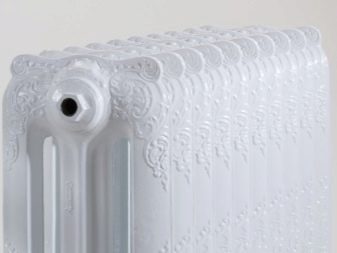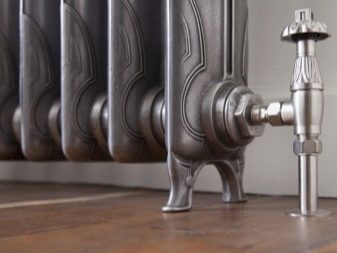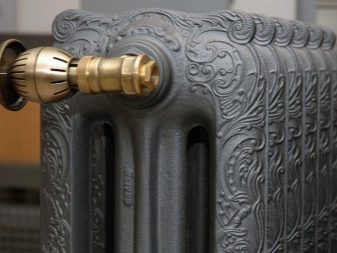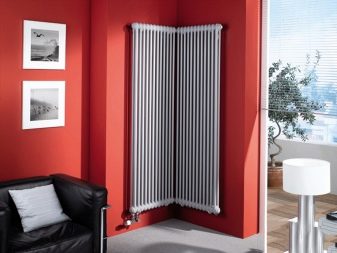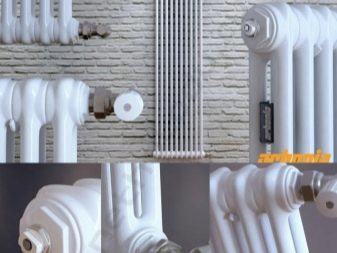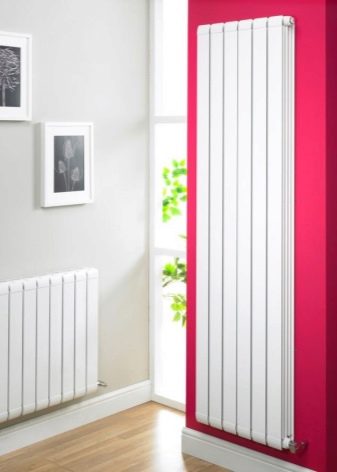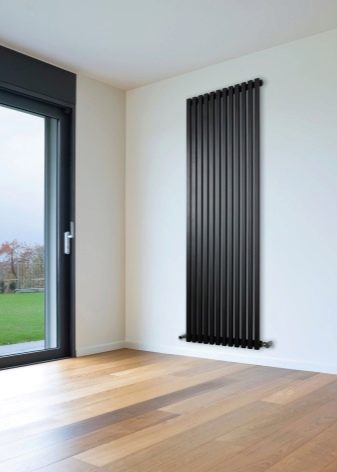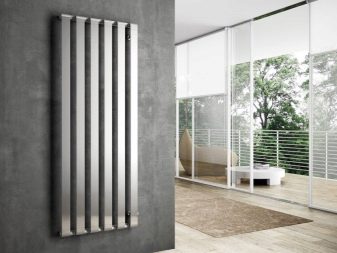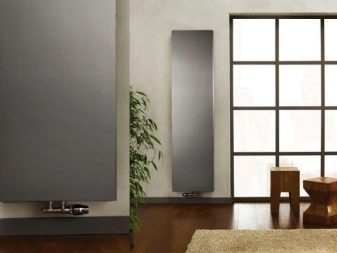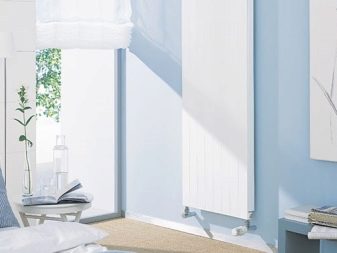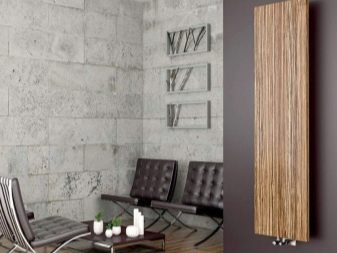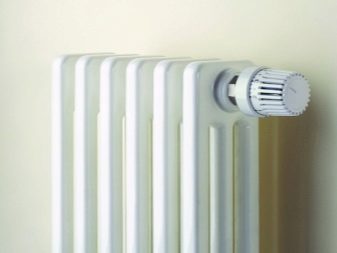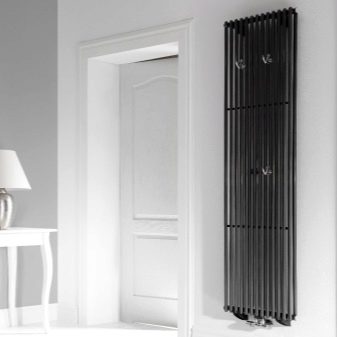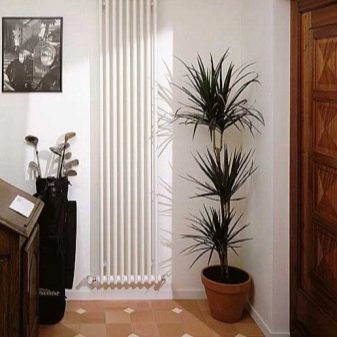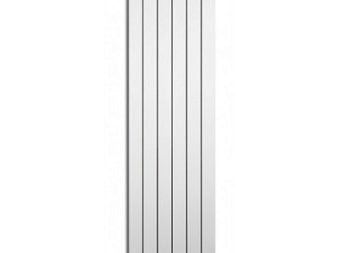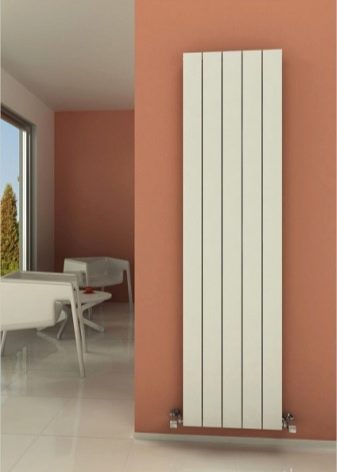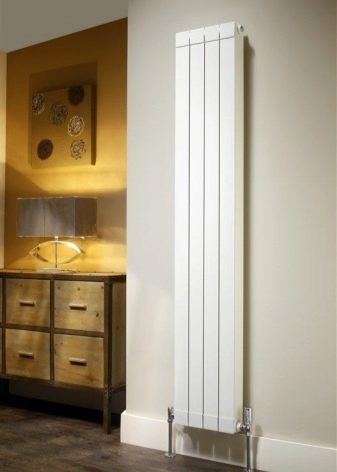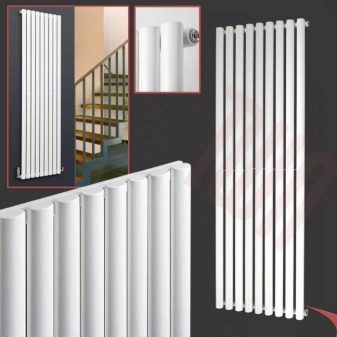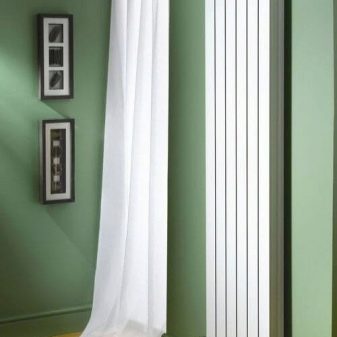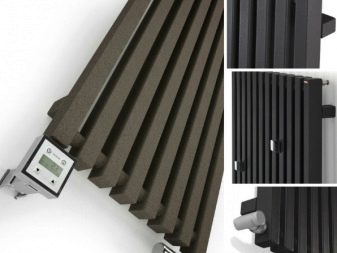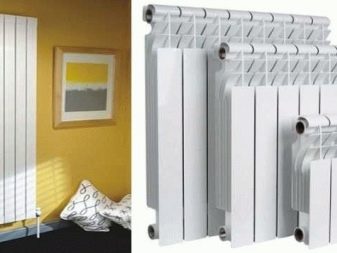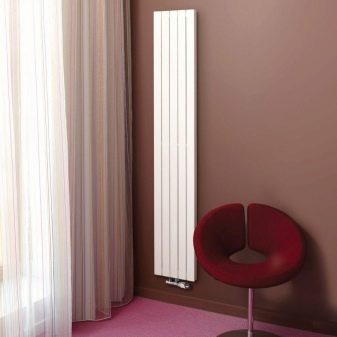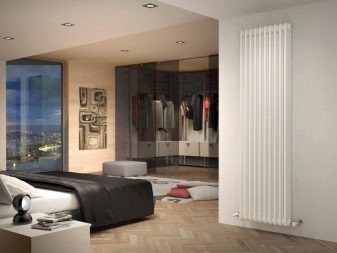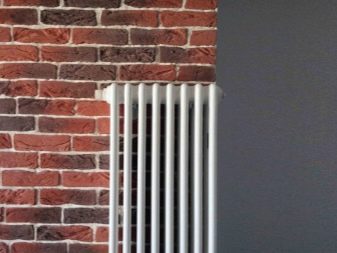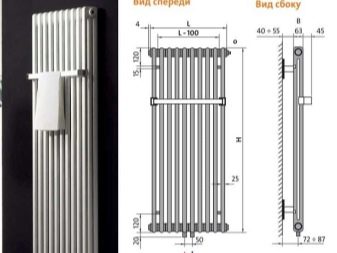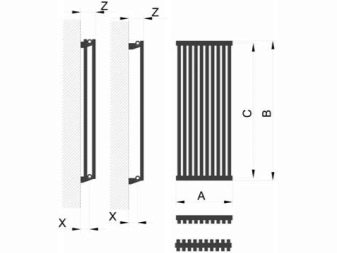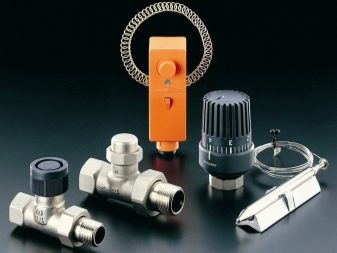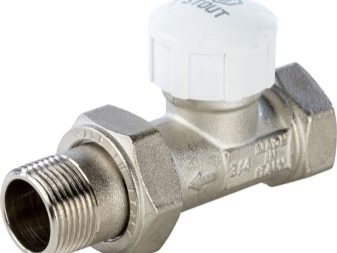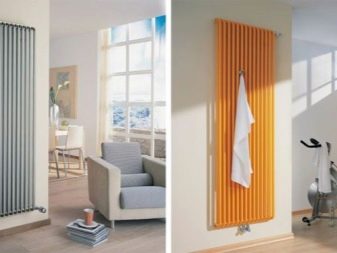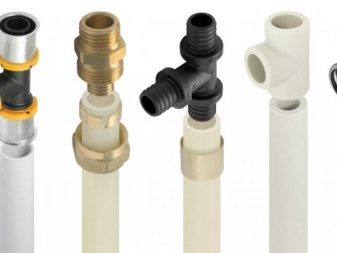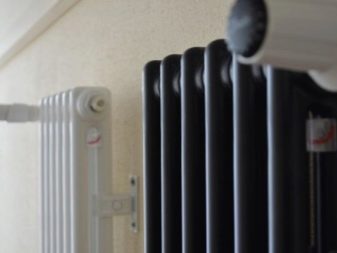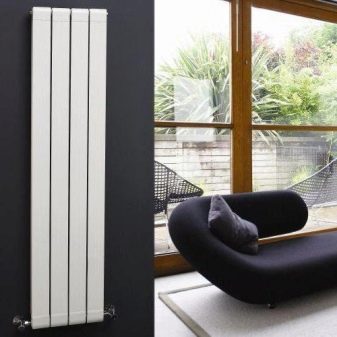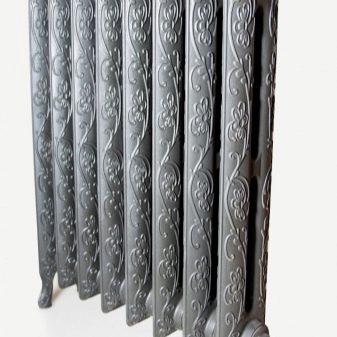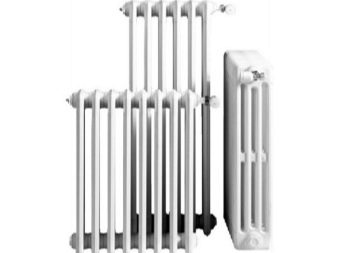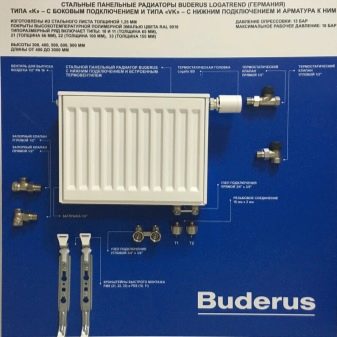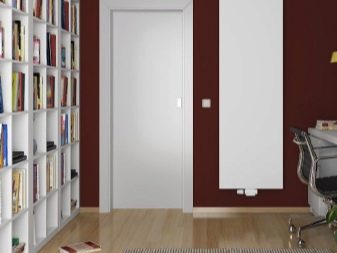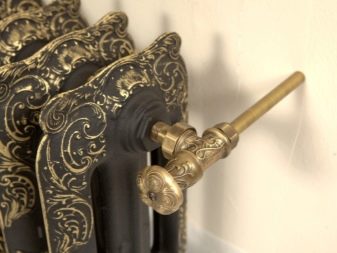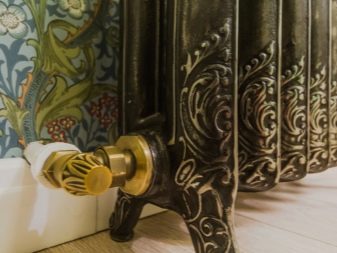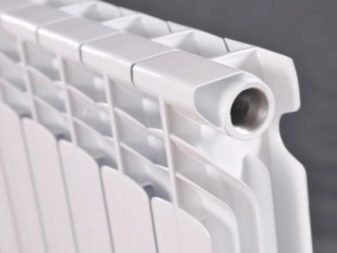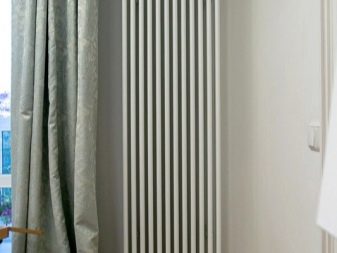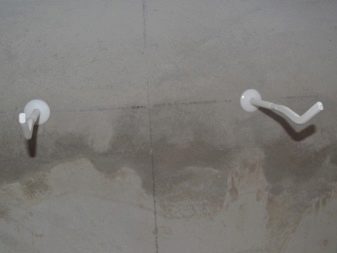Vertical heating radiators: recommendations for selection and installation

An indispensable element of any dwelling is a heating system, in particular radiators. In addition to the usual models that are located under the window openings, today there are vertical counterparts that are installed on the walls.
Special features
It is logical that vertical radiators are called, the sections of which are located vertically. However, most batteries have a similar arrangement, devices with horizontally oriented sections are quite rare. In this regard, it is more correct to put the shape of a rectangle formed by batteries as the basis of the criterion.
Thus, vertical batteries are called those that form a rectangle stretched horizontally. A distinctive feature of such systems is their orientation in height with a reduced width.
Thanks to this arrangement, it is possible to fit such batteries even in a small space, while maintaining the required amount of thermal energy. Systems can be located almost from the floor to the stream, in human height. Spreading infrared thermal radiation (similar to solar heat) at the level of human growth, they provide increased comfort in the room.
Vertical batteries have many options for performance, differ in a variety of designs and colors. This allows not only to enter them into any room, but also to make an original interior detail. Such batteries, installed instead of the usual models placed under the windowsill, can not be hidden, but placed in any convenient place. In addition to practical, they perform a decorative function.
Finally, various product options can serve not only as a heater, but also as dryers and partitions.They even frame wall mirrors, and also serve as various pieces of interior.
Choosing vertical radiators, it is useful to know about their shortcomings. With this method of heating, the principles of convection are violated, and therefore warm air accumulates under the ceiling, which is irrational. And with intensive battery operation, this warm air becomes the cause of an unfavorable microclimate. In addition, in the internal channels of vertical batteries increases the likelihood of air traffic jams.
Finally, the installation of such a system is more laborious. Even a slight vertical deviation will be noticeable and will disrupt aesthetics. Difficulties arise with the supply of pipes to the heating circuit. In this case, it is necessary to abandon the most effective diagonal connection scheme. Otherwise it will be necessary to brick the pipes into the walls, which is unaesthetic and unsafe in the event of an accident.
The output is the use of a lower connection, which is not as effective and rational as the diagonal one. In addition, vertical batteries require a reliable, powerful mounting system.
Kinds
Depending on the material of manufacture and constructional features, the following types of vertical batteries are distinguished:
Cast iron
Due to its high performance, cast iron batteries are very popular. However, unlike the usual classical models, today they can have a diverse design, flat or curved surfaces.
Often they have cast in the form of a vegetable or fantasy pattern. Such models are optimal for interiors in retro style. As a rule, they have the appropriate style of stands, plugs, taps, holders.
Pig iron meleno heats up, but it also cools slowly, keeps heat well. In this regard, for high-quality heating of the room enough cast-iron pipes of small height. Such devices rarely exceed 120-150 cm.
By themselves, cast iron batteries are characterized by high weight, which increases when channels are filled with water. This makes it impossible to install a vertical system on partitions or walls of small strength. To increase the reliability of the device allows the legs, which are performed in the same style as the battery.
Vertical batteries made of cast iron make it possible to receive infrared thermal energy, and thanks to the absolutely smooth inner surfaces, the coolant does not meet any obstacles in its path, no traffic jams form in the channels. Such a device is suitable for installation both in an autonomous (private house) and centralized (apartment houses) heating system.
In most cases, cast iron radiators have the form of a collapsible structure, that is, they consist of several sections, the number of which can be adjusted at the discretion of the owner. Such a system is characterized by higher maintainability. A broken section is easy to replace, avoiding dismantling the entire radiator.
Finally, cast iron batteries are characterized by durability, resistance to hydraulic shocks, often occurring in the central heating system. However, to mechanical shocks such products are very sensitive, which is important to remember in the process of transportation, installation and operation.
Steel vertical batteries
Depending on the design features, there are 3 types (sectional, panel, tubular), which have certain differences in physical properties.In general, steel batteries are significantly inferior in quality to iron ones. They have a shorter service life, because the coolant adversely affects the strength and integrity of the internal surfaces of such systems. In addition, they are not resistant to hydraulic shocks. However, steel radiators are also quite popular, due, first of all, to their affordability.
Sectional steel batteries consist of several sections that can be added or reduced. They are lightweight. The standard height is 185-200 cm. Products can be mounted on any walls and partitions.
In each section there is a tube, the purpose of which is the circulation of the coolant. In its upper and lower parts, it ends with perpendicular channels having threads on both sides. The connecting sleeve is inserted into a carving.
Outside the tubes are enclosed in metal plates, which increases the active heat exchange area. The plates have an enamel coating, which is characterized by resistance to elevated temperatures and can be painted in any shade.Due to the variety of colors and ergonomics, sectional radiators made of steel can be used in rooms with different sizes and interiors.
Such systems are best used in autonomous heating systems, where unexpected hydraulic shocks are excluded, and the temperature of the heat carrier is controlled.
Panel steel radiators
Externally, they are a panel that can have a different shade or a pattern applied to the surface. Structurally, such panels can consist of two stamped sheets welded to each other, between which pipes for circulating coolant are arranged. Another popular type of battery is a single panel, behind which is a convector. However, a similar convector can also be between two similar panels. For greater efficiency, not one but two convectors can be mounted between the panels.
Various modifications are significantly different visually, have a different thickness. In the vertical version, when the radiators are not placed under the window opening, but on the walls, convection heat exchange loses its efficiency.In this regard, it is enough to choose a panel radiator without a convector with a directed flow of heat into the room. The use of products with 2 and 3 convectors also does not make sense, since they will not provide convection, but such systems have a higher thickness and cost.
The low weight and integrity of the system simplifies installation. The panels are hung on special brackets, after which they are connected to the heating circuit pipes.
When choosing a panel welded from 2 sheets, you should additionally install a pressure reducer to control the pressure inside the pipes. This is due to the fact that the internal parts of the panels do not have a corrosion-resistant coating, which causes corrosion. Plots with corrosion, in turn, in the case of water hammer face the appearance of leaks.
In addition, the vertical panels quickly heat up, but also accurately and quickly release heat. In case of autonomous heating, it is necessary to constantly keep the boiler on, which significantly increases the flow rate for the coolant (for comparison, cast iron batteries keep heat for a long time, so the boiler can be turned off periodically or reduced in intensity).
Tubular steel radiators
They are long pipes connected to each other in the upper and lower parts with collectors. The height of such products can reach 300 cm, so they are suitable for rooms with high ceilings. The tubes can have a round and rectangular (square) section, be angled, have smooth bends. This allows you to give products unusual shapes and designs, as well as transform them into partitions and non-standard design elements. There are also corner designs that are ergonomic.
Tubular systems are considered more reliable than panel systems. First of all, their internal walls have a corrosion-resistant coating, which increases the reliability and durability of tubular products. Unlike other steel structures, tubular are most resistant to hydraulic shocks.
They have a smooth external surface from which dust and dirt are easily removed. In addition, the system is devoid of sharp corners, therefore, it is considered the safest and is suitable for installation in children's rooms.
Aluminum products
Differ in high operational properties.But they appear only when several criteria are taken into account, especially the quality of the coolant. In addition, they can only be mounted in closed systems. Otherwise, oxygen is detected in the coolant, which leads to corrosion of the metal.
The product is distinguished by its low weight, neat appearance, durability and affordability. Designs are collapsible and non-collapsible.
The standard height is 185-200 cm. The products are characterized by high heat efficiency, but in the area of the ribs they may overheat. Due to the chemical reactions of aluminum and coolant, gas formation is possible, and poisoning can be eliminated by equipping each section with an automatic gas vent. This complicates the process and increases the cost of installation.
Bimetallic radiators
The most effective and reliable systems consisting of an internal and external pipe. The first is made of stainless metals and serves to circulate the coolant. The material for the outer pipe is usually aluminum, which has an enamel coating. In appearance, they are indistinguishable from aluminum products, but have higher technical characteristics and, therefore, higher cost.
First of all, it should be noted the high thermal efficiency of bimetallic batteries, due to the thermal conductivity of aluminum and the ability of stainless steel to accumulate heat. Such products withstand high pressure (up to 40 atmospheres) and high temperatures.
It is noteworthy that bimetallic radiators can fully demonstrate their best technical characteristics only with significant increases in pressure and temperature. In this regard, when installing them in an autonomous heating system, it is imperative to use a water circular pump, which will provide the appropriate pressure.
Such batteries have a reliable internal corrosion-resistant coating and many options for external performance. Most models are equipped with thermostats to maintain a comfortable temperature in the room.
Bimetallic batteries can be made not only from stainless steel and aluminum. Products of copper and aluminum demonstrate no less effective functioning.
Each type of radiator includes electrical models for which a special oil is used as a coolant.
How to choose?
The decisive criterion when choosing a heating radiator is its heat transfer. The power of the system is selected taking into account the area of the room, the presence and number of walls in it in contact with the street. Consideration should be given to whether the walls are facing south or north.
For an apartment, where the likelihood of hydraulic shocks is higher than in a private house, it is better to choose cast iron or bimetallic products. For unusual interiors, you can pick up designer radiators, while concise batteries that have a chrome color will fit in almost any interior.
If we are talking about steel tubular products, then preference should be given to domestic options. They have a wall thickness of 2 mm and can withstand a pressure of 20 atmospheres. Foreign analogues can withstand a pressure of only 15 atmospheres with a wall thickness of 1.5 mm.
Among steel elements, tubular systems are considered the safest. However, they also have vulnerabilities - welds. In general, when using radiators made of steel, it is recommended to equip them with gearboxes, which allow to control temperature indicators and the constant pressure of the coolant.
Installation
Vertical batteries must be installed on reinforced walls; otherwise, due to the heavy weight, the structure will simply fall, tearing out part of the wall. Even before the installation phase, you should consider ways to regulate thermal processes. Usually, valves and taps mounted on the inlet pipes are used for this. They will help stop the flow of coolant in case of an accident.
Care must also be taken to install a valve with which air is drained from the batteries. Such events help to avoid air traffic jams in the channels and increase the efficiency of radiators. It is advisable to take care of all I / O devices during the installation phase, since additions and alterations to an already installed system are expensive.
In vertical batteries, the bottom connection is usually used, and all the assembly units are hidden in a wall or a special box. Much less commonly used lateral connection. Its main drawback is the incomplete removal of the coolant from the pipes (it can remain there even in the summer), which is unfavorable for the state of the radiator.
Radiators are connected to the heating system in the same way as a typical wiring diagram. Steel, plastic and metal-plastic pipes can be used for this.
Galvanic pipes (for example, from copper with aluminum) cannot be used.
Step-by-step installation of vertical radiators is as follows:
- The kit is being assembled, including installation of gaskets, plugs, thermostatic and stop valves.
- Mayevsky's valve is mounted.
- Marking of mounting points for brackets.
- Mounts are mounted.
- The radiator is hung on the brackets, the installation accuracy is re-checked.
- The scheme connects the batteries.
Manufacturers
Among the most popular manufacturers of heating radiators are the following:
- Konner. Country of origin - Russia. Under this brand, high-quality cast-iron batteries are produced that are not inferior in quality to their European counterparts, but adapted for use in domestic conditions. Among the advantages of products stands out resistance to hydraulic shocks and high-quality corrosion protection of internal surfaces.The collections include many products of various forms and design solutions, there is a special line of batteries in retro style.
In addition to cast iron, the manufacturer also produces bimetallic and aluminum batteries of various modifications.
- GuRaTec - German cast iron batteries, which, due to their perfect appearance, are often called a real work of art. High performance is achieved through the use of the latest engineering developments and impeccable quality of performance. The devices are available in retro style, have many modifications, the maximum height - 970 mm.
- Roca - one of the most famous Italian manufacturers of plumbing and heating systems. The company has no subsidiaries outside of Spain, which guarantees the original quality of products and their compliance with European quality and safety standards.
- Buderus - a company that has a solid history (formed in 1731), therefore, the manufactured products are characterized by the highest quality. For a long time, the manufacturer produced cast iron heating devices, but today the range also includes 2 types of steel radiators.Feature of the product is a complete set of batteries systems for quick installation.
- Kermi - Another German manufacturer who received positive feedback from the domestic buyer. The range is represented by steel radiators. In addition to high quality, they are distinguished by a large variety of shapes and designs. It can be vertical panel radiators of any size, design radiators, and even entire walls-radiators.
Products are manufactured exclusively in Germany, which guarantees strict quality control of radiators.
- Korado - Czech manufacturer, one of the world's leading manufacturers of heating appliances. Vertical radiators can be found in the RADIK VERTIKAL line. These are steel products, standard white. However, if desired, the client, they can be painted in one of the shades of the catalog, which has 21 colors.
- Retro style - Russian-made cast iron batteries that mimic old (19th-early 20th century) heating devices. In addition to functionality, they also have an aesthetic look and often become a decorative element of the interior.Patterns on the surface are made by art casting in accordance with the chosen style of radiators.
Admiration is caused by painted batteries, which can be made according to the Gzhel technique, to have a gold or red pattern in gold. The company also manufactures and paints custom-made batteries. Products have high performance, while they are characterized by lower cost than Western counterparts.
Tips
Before installing aluminum systems, it is recommended to wash them, the main thing is not to use alkaline for this. The wall on which the battery is hung is additionally reinforced. In addition, it is necessary to finish it with refractory material, for example, apply a special plaster. This type of finish will increase the fire resistance of the surface, but will not increase its thickness.
Attachment points should be evenly distributed over the entire surface of the battery, be durable, free of defects and damage. Oil models can be mounted only in places where the risk of their ignition is minimized. Such systems do not tolerate mechanical damage, so it is better to protect them with a special mesh.
How to install a vertical radiator, see the following video.
